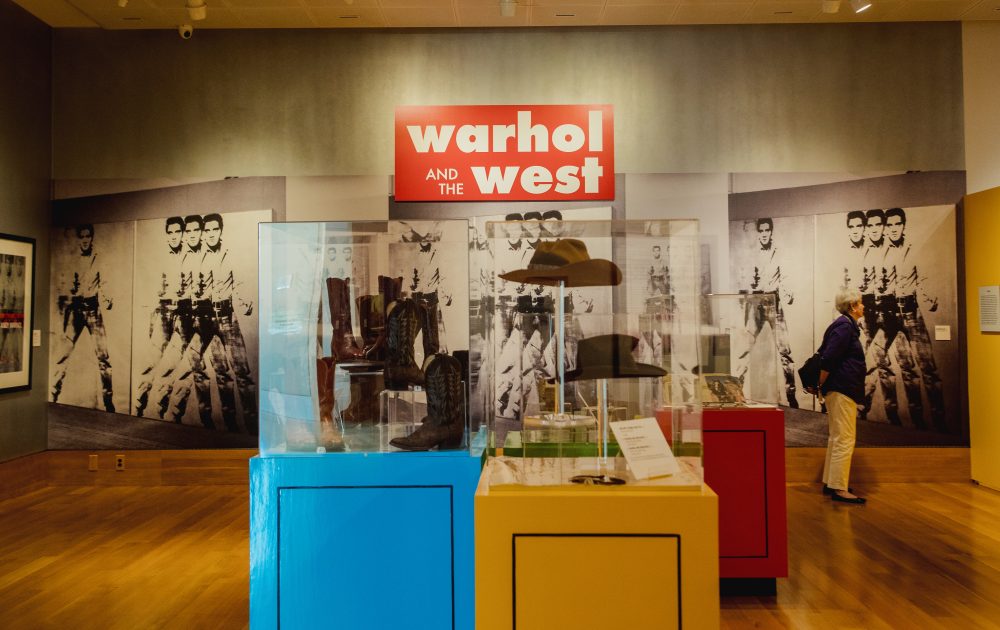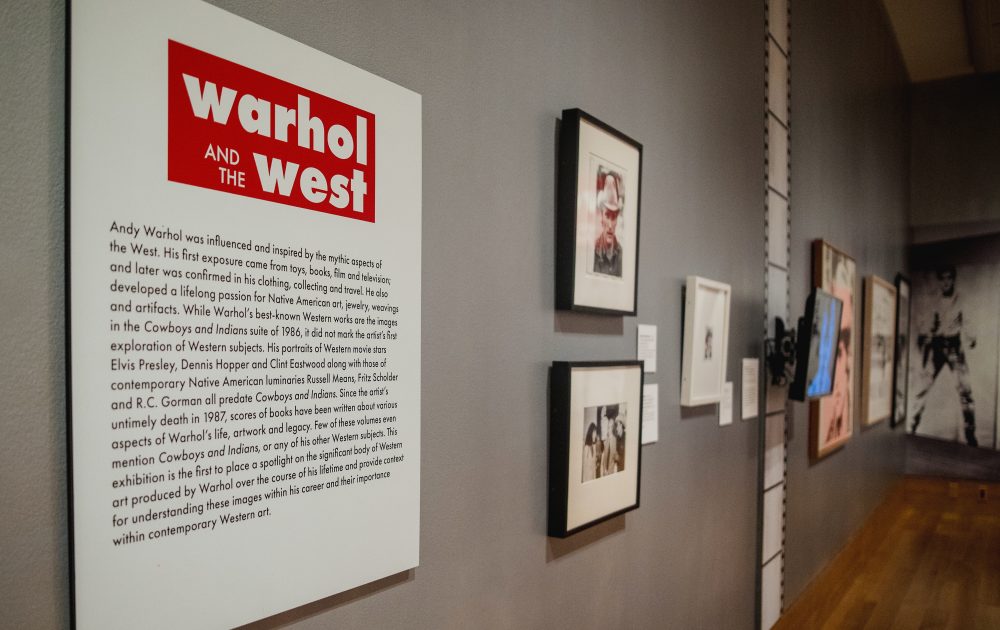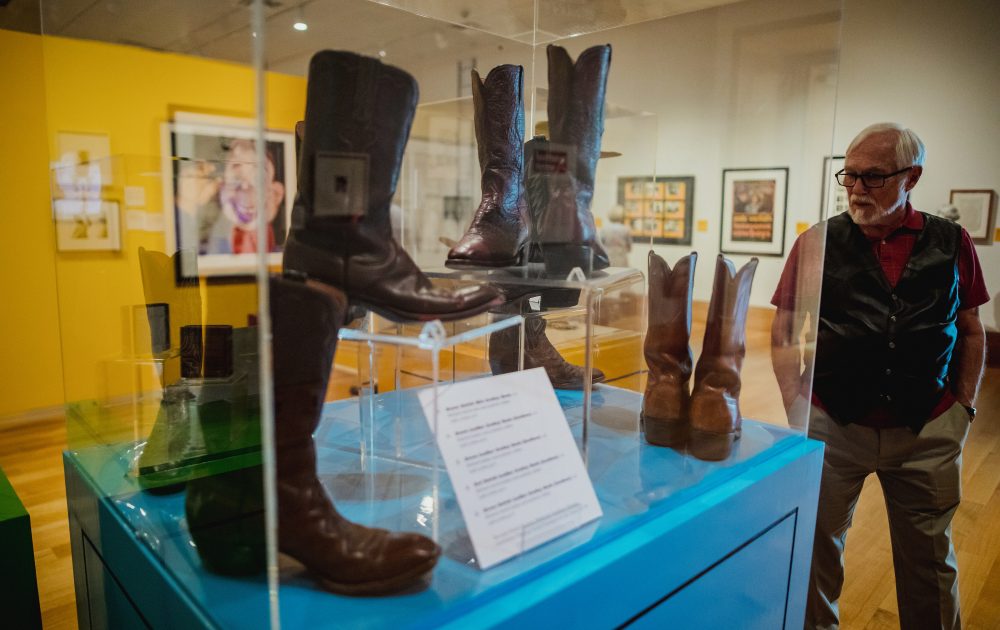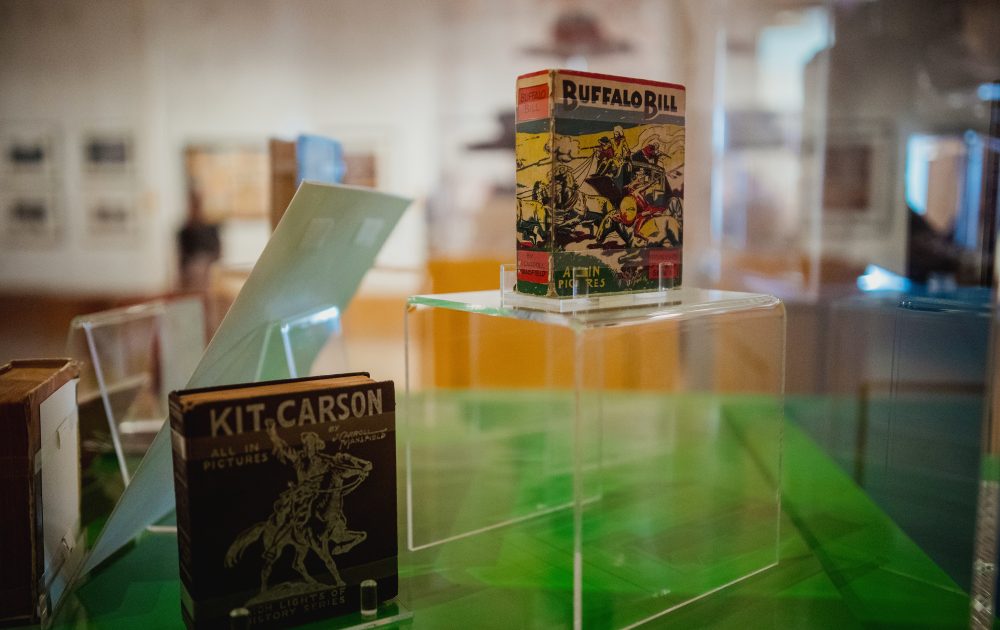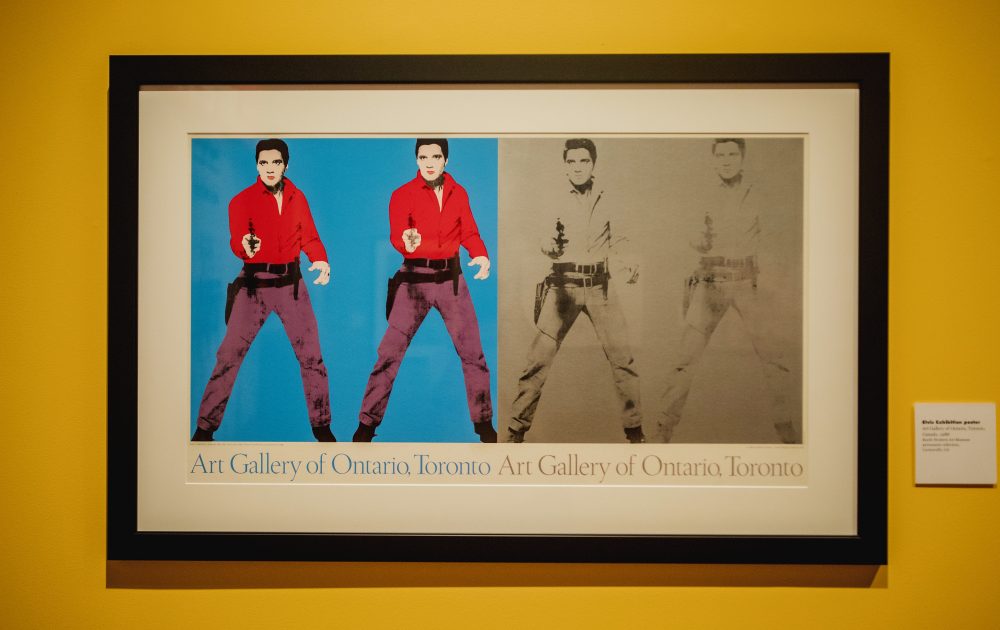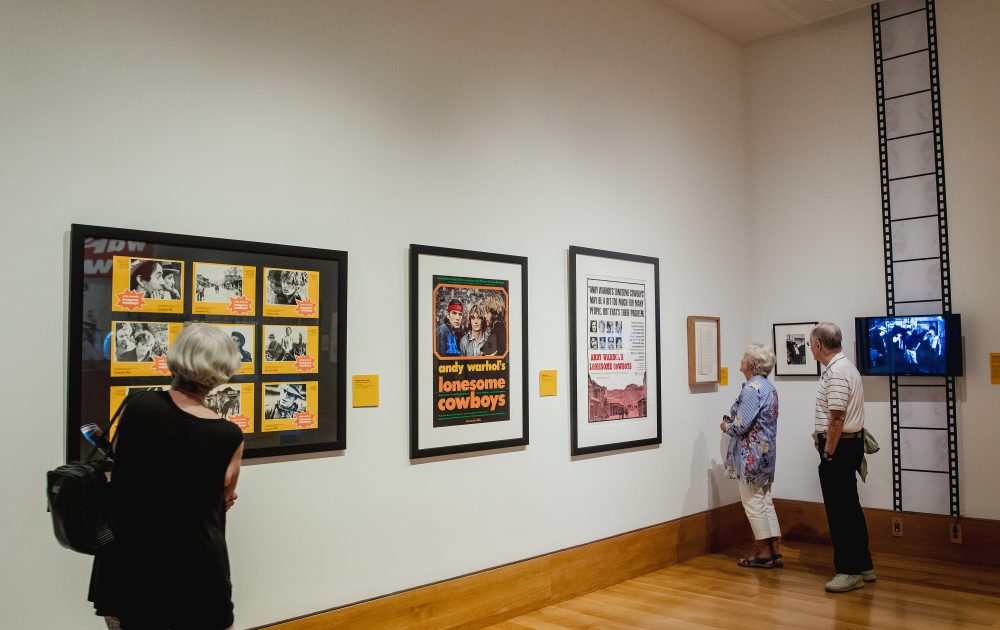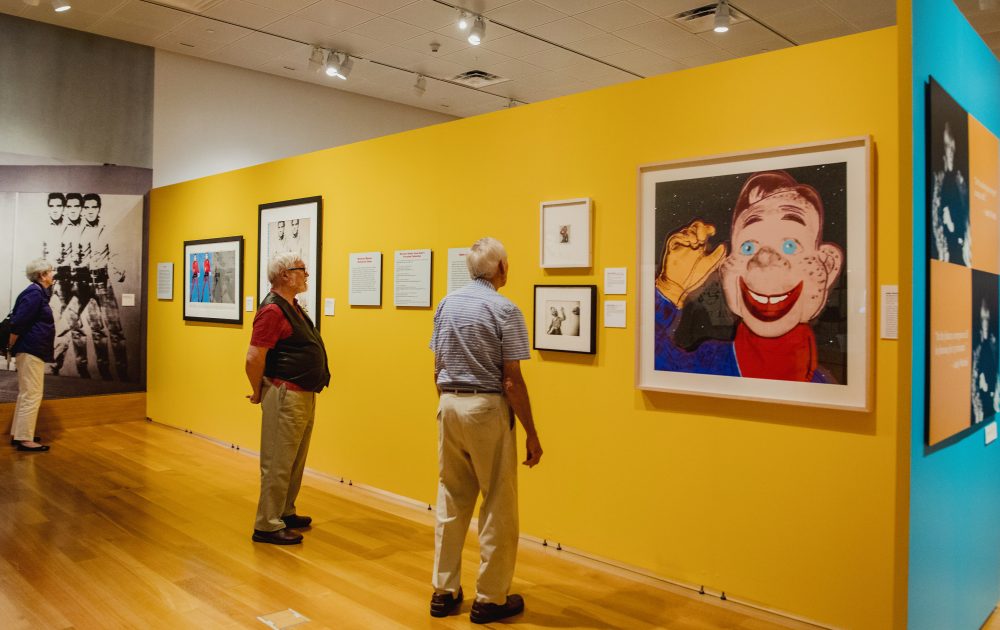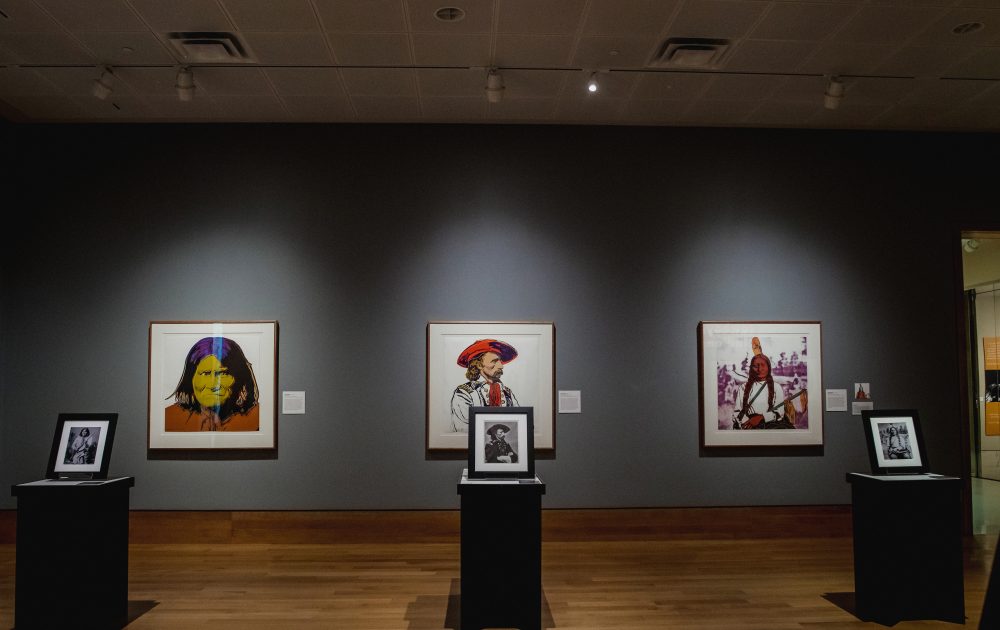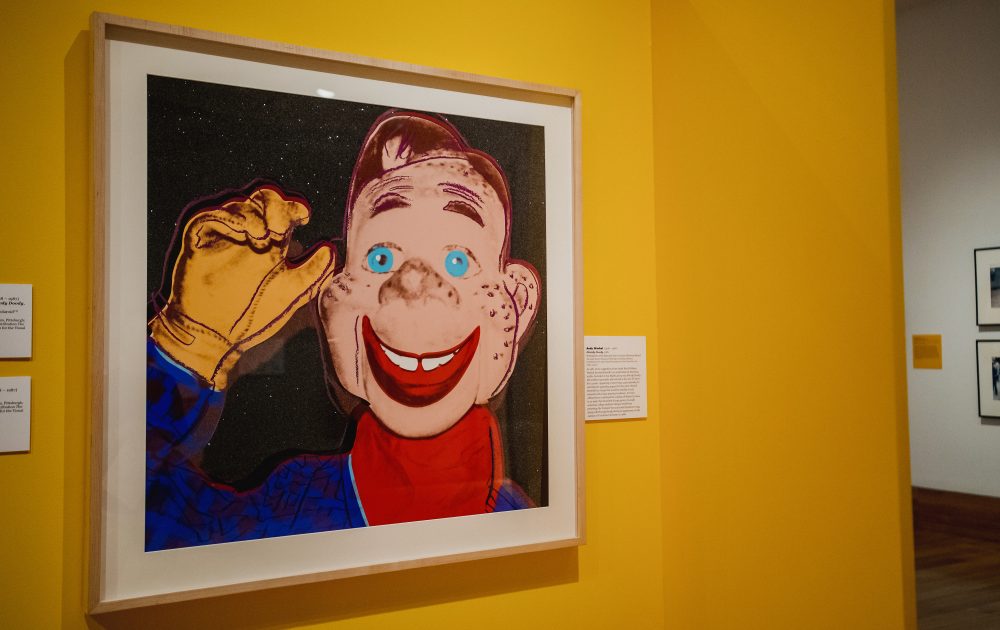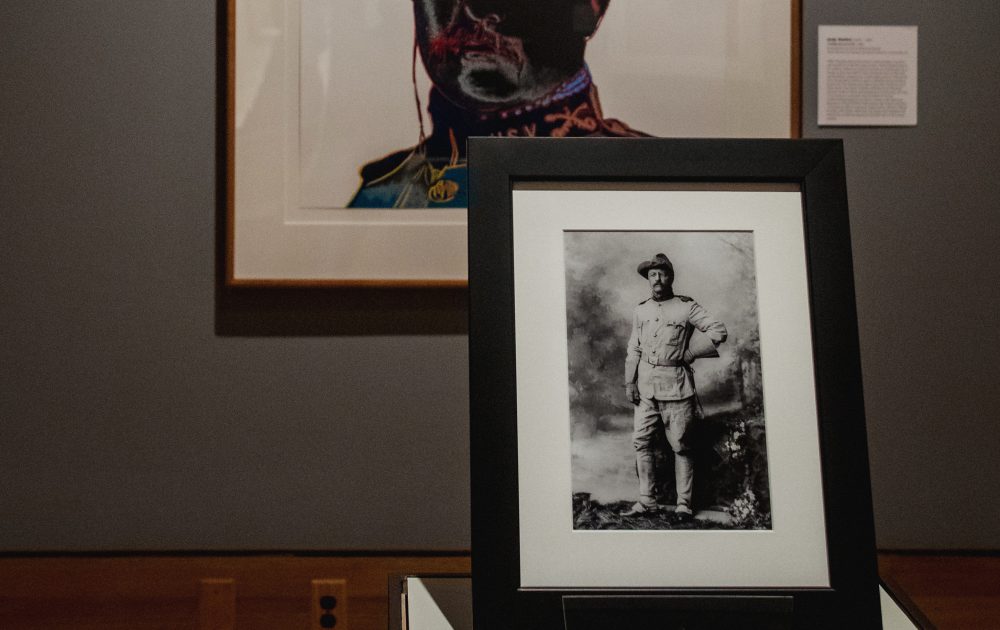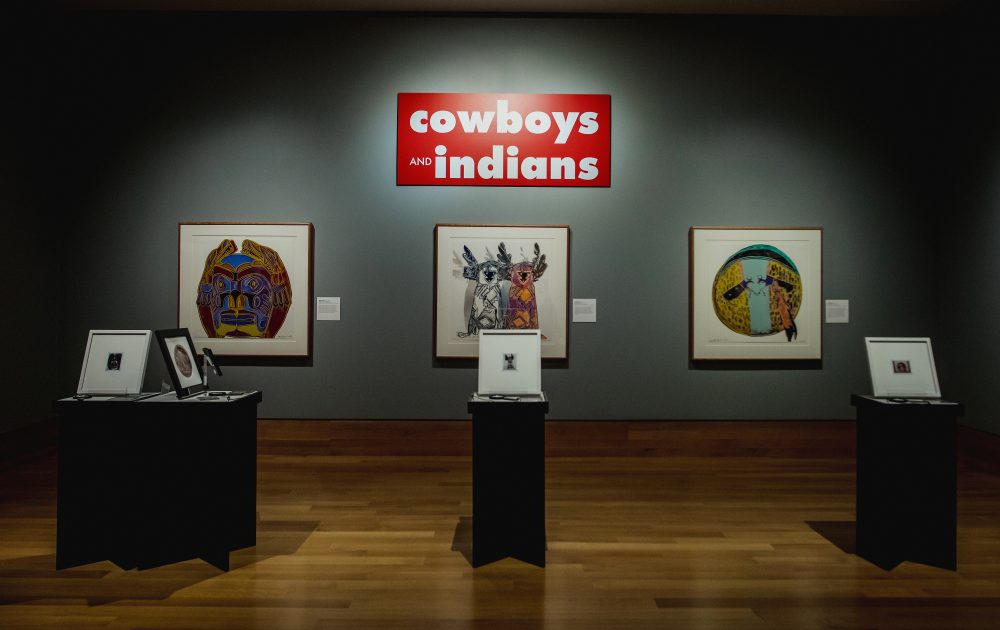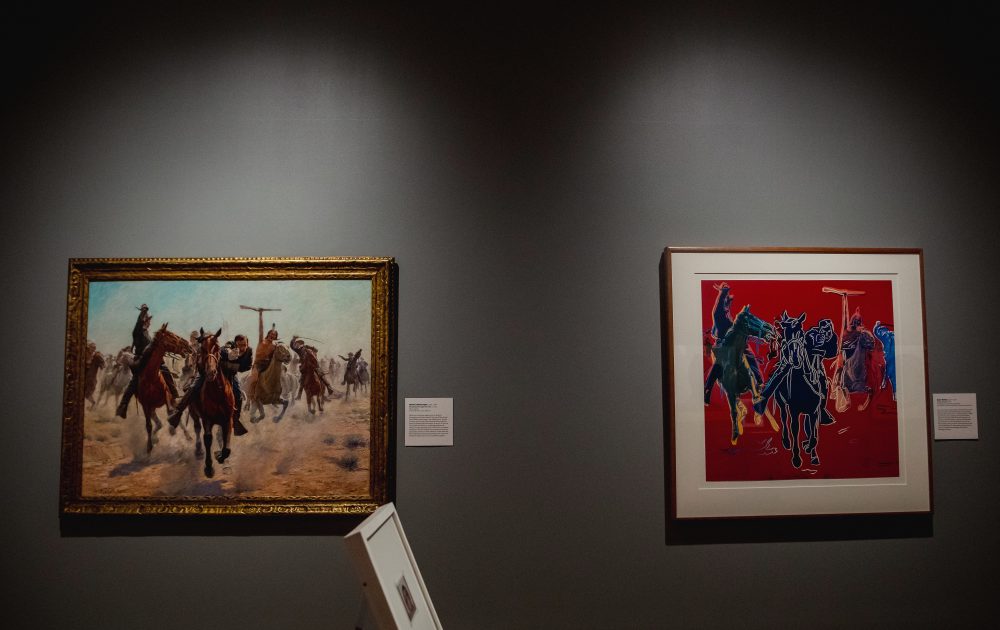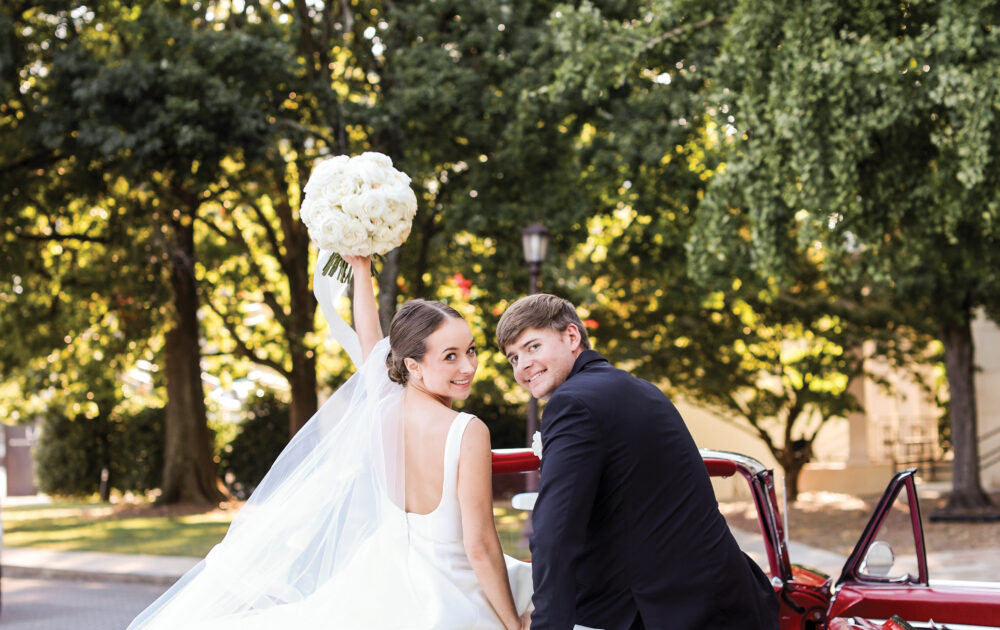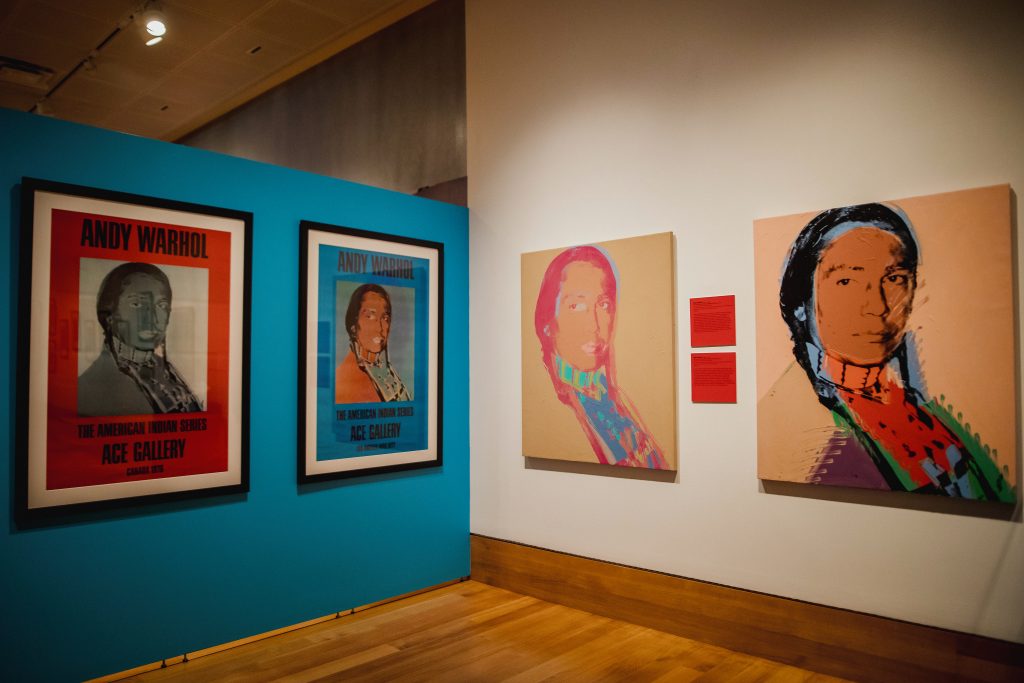
Photos Jason Huynh
Andy Warhol is truly an American household name. Fellow artists and clothing designers have been influenced by his unique style. Warhol was a figurehead of the Pop Art movement in the mid to late 1950s. His work included several different mediums including film, print, paintings and sculptures. But one of Warhol’s major inspirations was the American West.
He wasn’t exactly famous for his love of the West but when Seth Hopkins, the Executive Director of the Booth Western Art Museum in Cartersville, Georgia started digging, he found more than he was anticipating. Not only had Warhol completed Western inspired works himself, he was a voracious collector of all things Western. After fifteen years of research and planning Hopkins has finally attained his goal of opening an exhibit. We got an inside look at the Warhol and the West exhibit at the Booth Western Art Museum.
Hopkins began his journey towards this exhibition around 2001. “When we were first putting the museum together and I was hired as director, I was looking at our collection and realized that we had an anomaly. We had fourteen pieces by Andy Warhol. I mean who knew Warhol did anything Western? So that became somewhat of an obsession for me to find out if that was an anomaly for Warhol and was it an anomaly for western art.” Through his research, Hopkins managed to uncover a whole world that Warhol left behind. “The western things that he did were few and far between, but when you pull them all together it makes a pretty impressive body of work.” Most don’t truly associate Warhol and western art, but there had to be something there because as Hopkins was discovering, Warhol’s obsession was deeper than anyone truly could have imagined.
Hopkins tells us that “Warhol had done this body of work we call ‘Cowboys and Indians’ it was the last major thing he did before he died. In 1986 he experimented with fourteen different western images.
They eventually narrowed it down to ten that were published as a portfolio, or a suite. We owned one of every fourteen. So, in the process of getting my academic background together I wound up doing a master’s program at the University of Oklahoma. For my master’s thesis, I investigated that question: Was this a portfolio of western images that came out of nowhere at the end of his life, the last major thing he does before he dies or was it the culmination of a lot of things western throughout his lifetime?” The thesis reached 110 pages and Hopkins had his answer. That thesis is the basis for Warhol and the West. “It’s something that I have been working on off and on for about fifteen years now. Since I completed that thesis in 2005. To see it coming to fruition and culminate with this exhibition has been pretty exciting.”
The point of the whole exhibition is, according to Hopkins, “to expose people to the western art that he did. And his collection is so big and so vast, and he did so many things.” The exhibit begins with what most people recognize of Warhol. “It starts as early as his earliest images in Pop Art. You know when he did Campbell Soup, Marilyn Monroe and Jackie Kennedy.
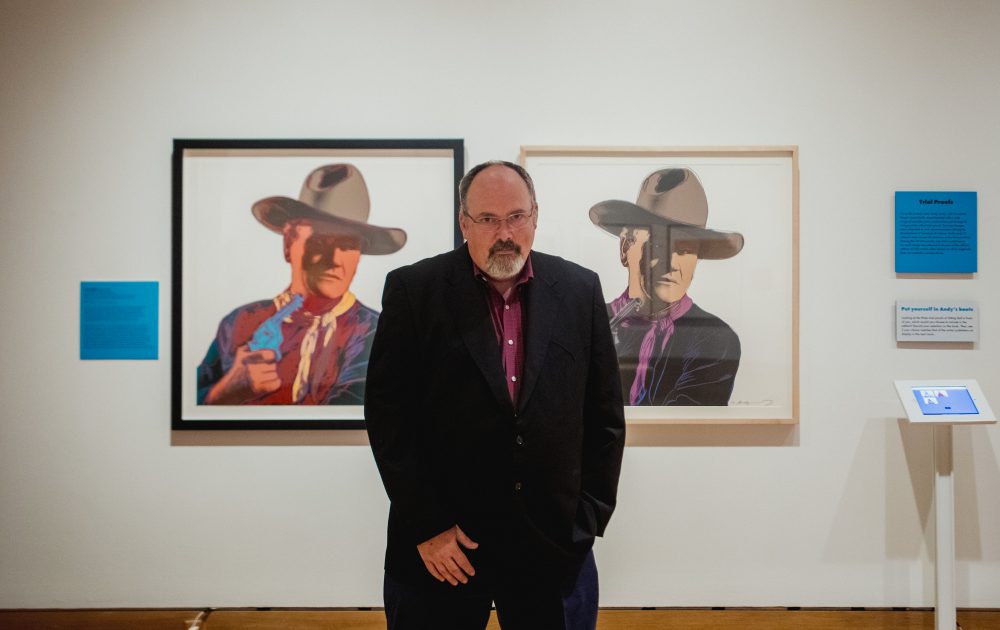
He also did Elvis. One of the things that they always said about Warhol was that his artwork was a mirror for America. He really was just holding up a mirror up to America and saying ‘This is who you are, this is what you’re about. Whether it’s Campbell Soup or Heinz Ketchup or Marilyn Monroe, that is America.’ So, he could have done Elvis as a teen singing Idol that would have been Americana, or an image portraying an American ideal. He could have done Elvis as a teen singing Idol matinee idol, movie star and that would have been double Americana. But Warhol takes it a step further: Elvis as a teen singing Idol, Matinee Idol, Western Movie Star.
Because the image of Elvis is a gunslinger from a movie called “Flaming Star” Triple Americana. Warhol really had the ability to zero in on an image that would resonate with people. So, Elvis as a gunslinger really resonated on multiple levels with people. And it was one of his most popular early images and still is very popular today. When you walk into the exhibition you will be kind of immersed in an exhibition of Warhol’s Elvis imagery. That will be the first thing you see when you walk in. I think that will hit people back to the point of not knowing that Warhol did Western. I don’t think that they think of the Elvis image as a western piece per se because they kind of look through the western image of it and just see the person itself. But this will have this ability, through this immersion, to say hey this is a western image too.”
Warhol was, above everything else, a collector and this exhibit will showcase some of the Western pieces that he collected. Hopkins explains, “I think the other biggest asset of the exhibition that people won’t be expecting is what a collector he was. He was a hoarding collector. When he passed and they sold his estate, Sotheby’s came in and logged everything in the house. 10,000 objects. Of that, they had a ten-day sale which there was a box set of catalogues for the sale. One whole day was for nothing but his Native American art collection. Rugs, bead work, pottery, jewelry, tomahawks, masks, anything that you can imagine that was Native American type art. He collected it. He also collected photographs of Native Americans, he had 300 Curtis images. Edward S. Curtis is the most famous photographer of Indian subjects of all time. He had 300 of them. He had paintings by some of the great western artists in his collection. He had artwork that he had probably traded with native American artists It was just incredible that he had all of that stuff. He wore cowboy boots almost every day. They have 27 pairs of them at the Andy Warhol Museum in Pittsburgh, we will have five of those here at the exhibition. He had a Roy Rogers alarm clock. What could be more Western than that?”
Many artifacts from his personal collection will appear in the exhibit along with clips from his western films. Hopkins wants to ensure that those visiting the exhibition will truly understand what Warhol was trying to say. “We are really trying to bring this all into one space and say, ‘Look at everything western he touched.’ As being that mirror to America You know the west, the western movies, the western motif and western TV shows are a big part of who America is. So, it’s no coincidence I don’t think that he eventually got around to doing a fair amount of that material because it is such a core part of America.”
The exhibit will run from August to December 31 with many opportunities for additional experiences. Hopkins’ work on this exhibition has led to a one of a kind experience that you would be hard pressed to find somewhere else. He hopes that patrons will have an impactful experience during their visit. He also hopes that visitors will take away some truths about Andy Warhol that he has learned from his time on this project. “Warhol was in tune with the West and he had a reverence and love for the West that began like it does for most people in our collector group, through the movies.
However, it matured over time to be much more than that. He had some reverence for the art and recognized that art and those people as being a major part of the American story, not dissimilar from the rest of the artists in our collection. Even though he was a pretty weird guy he wasn’t immune to being impacted by the West and its power, its story and its place in American history. I think just to reflect back on all that he did related to the West and answer that initial question you said that when you think of Warhol, you don’t think of the West and I don’t think this is going to change anybody’s opinion on that you’re not going to immediately think of the West but maybe that the west is part of him just as it is a part of the history of art in America. Lastly, that he impacts how we think about the West and he’s had a pretty significant impact on other artists who deal with the West.
Warhol is probably the best known artists in American history, so to think that we need another exhibit or another book on Warhol is jarring. One would think that everything’s been done but this is such a unique little part of his world that hasn’t been explored and I think it’s pretty important.” Hopkins has written a book to accompany the exhibition and his suggestion is to “Come and see the exhibit a couple of times. The first time, come and enjoy it. Then, buy the book and go home and skim through the book or read it or whatever and make some connections with what you saw and finally, come back a second time. I think it would be a much more meaningful experience. If you are going to come multiple times, then you might as well have a membership so you can come back as often as you want.”
Warhol and the West is truly a unique experience and the heart and soul of the team that put it together is evident in every detail of the exhibition. The Booth Western Art Museum continues to give the community the opportunity to glimpse the world outside of North West Georgia. The exhibit will be interactive and fun, but it will give visitors a prospective on Warhol and the American West that hasn’t been seen before.

